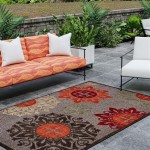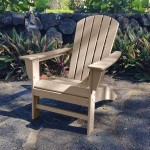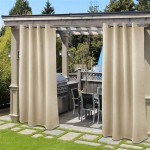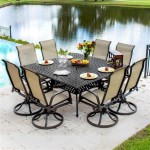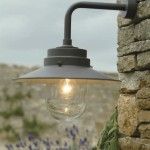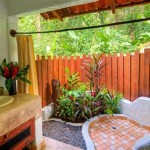Outdoor Changing Rooms for Pools: A Comprehensive Guide
Outdoor changing rooms for pools serve a vital function for both public and private swimming facilities. They provide a dedicated space for individuals to comfortably and privately change into and out of swimwear, offering convenience, hygiene, and a sense of security. The design, materials, and features of these changing rooms can significantly impact the overall user experience and contribute to the perceived quality of the pool facility.
The purpose of this article is to provide a comprehensive overview of outdoor changing rooms for pools. It will address various aspects, including the benefits they offer, essential features to consider, materials commonly used in their construction, maintenance requirements, and relevant considerations for accessibility and safety. This information is intended to assist pool owners, facility managers, and architects in making informed decisions when selecting or designing outdoor changing rooms that meet the specific needs of their users and the environment in which they are placed.
Key Benefits of Outdoor Changing Rooms
Implementing outdoor changing rooms near a pool area offers several key benefits that enhance the overall experience for swimmers and the efficiency of pool management. These benefits span convenience, hygiene, privacy, and the preservation of cleanliness in other areas of the facility.
One of the primary advantages is enhanced convenience for users. Changing rooms eliminate the need for swimmers to travel long distances, often wet and uncomfortable, to reach designated indoor changing areas. This is particularly beneficial for families with small children or individuals with mobility limitations. By providing a readily accessible changing space near the pool, users can quickly transition into their swimwear before entering the pool and change back into dry clothes immediately afterward, reducing exposure to the elements and minimizing the risk of discomfort or illness.
Hygiene is another significant benefit. Outdoor changing rooms help to contain wetness and debris associated with swimming activities. Without dedicated changing facilities, swimmers may track water, sand, and other contaminants into restrooms, locker rooms, or even the pool deck itself. This can lead to slippery surfaces, increased cleaning requirements, and a higher risk of slips and falls. By providing a designated space for changing, outdoor changing rooms minimize the spread of water and debris, thereby improving the cleanliness and safety of the entire pool area.
Privacy is a crucial consideration for many swimmers. Outdoor changing rooms offer a private space for individuals to change their clothes without feeling exposed or vulnerable. This is especially important in public pool settings where users may feel uncomfortable changing in open areas or communal restrooms. The availability of private changing stalls or cubicles within the outdoor changing room ensures that users have a sense of dignity and comfort while preparing for or concluding their swim.
Furthermore, outdoor changing rooms can contribute to the overall organization and efficiency of the pool facility. By centralizing changing activities in a designated area, pool staff can more easily monitor and maintain the space. This can help to prevent vandalism, ensure that facilities are properly cleaned and stocked, and address any potential safety concerns in a timely manner. Clear signage indicating the location of the changing rooms and any relevant rules or regulations can further enhance the user experience and promote responsible behavior.
Essential Features and Design Considerations
When designing or selecting outdoor changing rooms for pools, several essential features and design considerations should be taken into account to ensure functionality, durability, and user satisfaction. These considerations range from the layout and size of the changing rooms to the types of materials used in their construction and the inclusion of amenities that enhance comfort and convenience.
Adequate space is a fundamental requirement for any outdoor changing room. Each changing stall or cubicle should be large enough to comfortably accommodate an individual and their belongings. The overall size of the changing room should be proportionate to the expected number of users, taking into account peak usage periods. Insufficient space can lead to overcrowding, discomfort, and reduced privacy. The layout should optimize traffic flow, allowing users to move freely through the changing area without bumping into each other or obstructing access to lockers, showers, or other amenities.
Ventilation is crucial for maintaining a comfortable and hygienic environment within the changing room. Proper ventilation helps to remove moisture, prevent the build-up of odors, and reduce the risk of mold and mildew growth. This can be achieved through natural ventilation, such as strategically placed windows or vents, or through mechanical ventilation systems, such as exhaust fans. The choice of ventilation method will depend on factors such as the climate, the size of the changing room, and the budget. Regardless of the method used, it is important to ensure that the ventilation system is properly designed and maintained to provide adequate airflow and prevent stagnant air pockets.
Durable and weather-resistant materials are essential for outdoor changing rooms that can withstand the elements and maintain their structural integrity over time. Materials commonly used in the construction of outdoor changing rooms include treated wood, metal, plastic, and composite materials. Each material has its own advantages and disadvantages in terms of cost, durability, aesthetics, and maintenance requirements. Treated wood offers a natural look and feel but may require regular maintenance to prevent rot and insect damage. Metal is strong and durable but can be prone to rust and corrosion in humid environments. Plastic and composite materials are resistant to moisture and decay but may not be as aesthetically pleasing as wood. The choice of material should be based on a careful assessment of the specific environmental conditions and the desired level of maintenance.
Finally, amenities such as benches, hooks, shelves, and lockers can significantly enhance the convenience and usability of outdoor changing rooms. Benches provide a place for users to sit while changing their clothes. Hooks and shelves offer storage space for towels, bags, and other belongings. Lockers provide a secure place to store valuables while swimming. The number and type of amenities provided should be tailored to the specific needs of the users and the available space. It is important to ensure that all amenities are durable, easy to clean, and resistant to vandalism.
Materials and Construction Considerations
The selection of appropriate materials and construction techniques is crucial for the longevity, safety, and aesthetic appeal of outdoor changing rooms. Factors such as climate, budget, and desired maintenance levels significantly influence these choices.
Wood, particularly treated lumber, remains a popular choice for its natural aesthetic and relatively low cost. When using wood, it is imperative to select pressure-treated varieties designed to resist rot, decay, and insect infestation. Regular inspection and maintenance, including sealing or staining, are necessary to prolong the lifespan of wooden structures. Types of wood often used include cedar, redwood, and pressure-treated pine. Each offers varying degrees of resistance to the elements and requires different levels of upkeep.
Metal, such as galvanized steel or aluminum, offers superior durability and resistance to weathering. Galvanization protects steel from corrosion, making it a suitable choice for humid or coastal environments. Aluminum is naturally rust-resistant and lightweight, making it easier to work with during construction. Metal structures often require less maintenance than wood, but may be more expensive upfront. Powder coating can enhance the aesthetic appeal of metal structures and provide an additional layer of protection against the elements.
Plastic and composite materials are gaining popularity due to their low maintenance requirements and resistance to moisture and decay. High-density polyethylene (HDPE) is a common choice for panels and partitions, as it is durable, easy to clean, and available in a variety of colors. Composite materials, such as wood-plastic composites (WPCs), offer a blend of wood and plastic, providing a natural look with increased durability and resistance to moisture. These materials typically require minimal maintenance and are well-suited for high-traffic areas.
Beyond the primary structural materials, attention should be paid to roofing options. Options range from simple polycarbonate panels to more substantial metal or shingle roofs. Roofing should provide adequate protection from sun and rain while also being durable enough to withstand wind and other environmental factors. Proper drainage is essential to prevent water from pooling on the roof, which can lead to damage and leaks.
Finally, the foundation of the changing room is a critical aspect of its construction. A stable and level foundation is essential to prevent settling and ensure the structural integrity of the building. Concrete slabs or piers are commonly used to provide a solid base for the changing room. Proper drainage around the foundation is also important to prevent water from accumulating and causing damage.

Prefab Outdoor Shower Enclosure Changing Room Outdoorshower Showeroutdoor Poolshower

Pool Changing Room

Great Outdoor Shower W Room For Changing

Weekend Design Why You Should Invest In An Outdoor Shower

Outdoor Shower Diy Darien Ct Cape Cod Kits

Outdoor Shower And Changing Room Transitional Pool Dc Metro By Cahill Land Design Houzz

A Pool House Was Designed To Contain Shower And Change Room For This Home In

Roomsoutdoor Garden Rooms And Offices

Aqua Terra Poolhouse Purple Cherry

Recreate The Beach Club Atmosphere At Home With Kim Vallee



